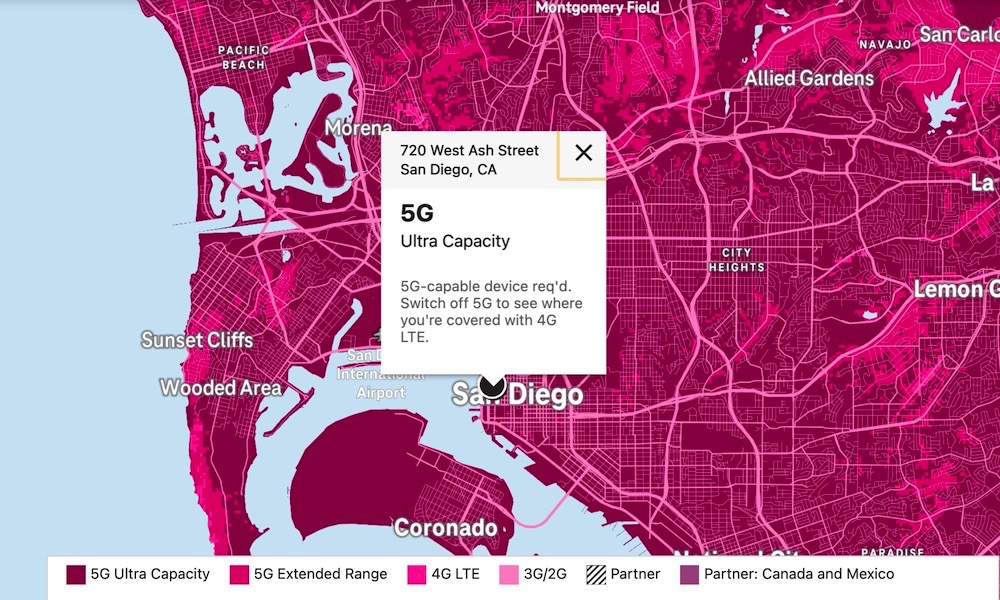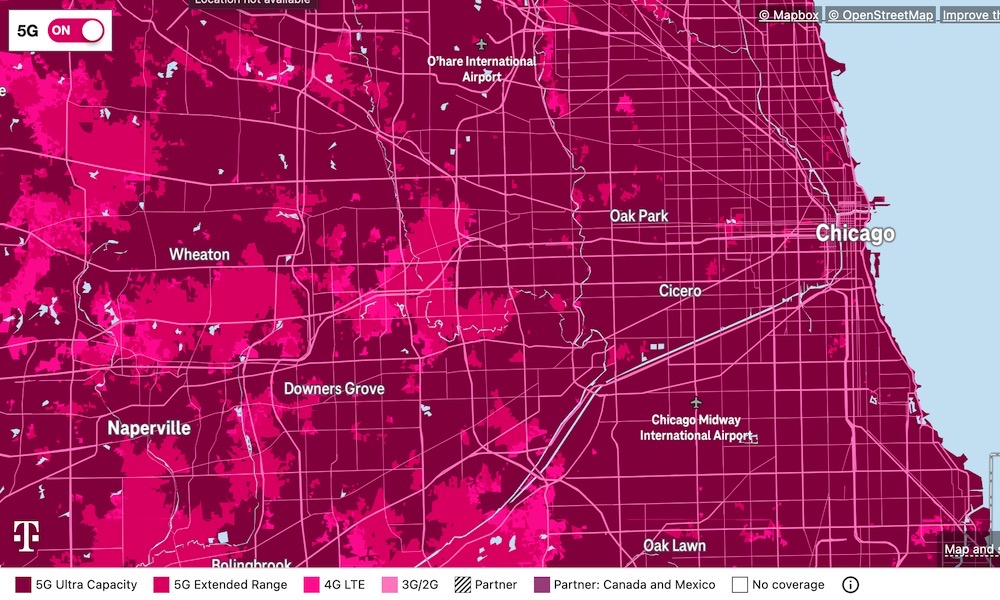T-Mobile’s New Coverage Map Is an Honest Look at ‘Good’ 5G Availability
 Credit: Elijah Fox / iDrop News
Credit: Elijah Fox / iDrop News
Toggle Dark Mode
T-Mobile’s latest revelation finally uncovers a more detailed look at its 5G network, including the robust 5G capabilities it inherited from the Sprint merger – giving iPhone users a clearer idea of what to expect based on where they live.
First things first – 5G is complicated, and the marketing really doesn’t help. That’s because 5G isn’t just one thing; it’s a whole series of data network upgrades that span three different band sections, each with differing limitations. So when a telecom company says that it’s offering “5G” that could mean almost anything – it may be adding some 5G upgrades to existing 4G LTE networks without changing much else.
On the other hand, it could be offering low-band 5G that doesn’t provide many significant speed boosts but is still technically 5G technology.
The chances are good that, outside of major metropolitan areas, services labeled 5G aren’t anywhere close to offering the full suite of 5G upgrades – and finding the details in your particular region can be a frustrating experience.
That’s why T-Mobile’s new map upgrades are an excellent start to clearing the nonsense up. Take a look, and you’ll see it’s quite literally rosy – but the details lie in just how it is shaded.
Choose a major city for a closer look, and you’ll see darker magenta areas highlighted. Those areas indicate zones where cell towers have been equipped with T-Mobile’s “Ultra Capacity” 5G, which is mid-band 5G that does offer significant speed boosts compared to 4G and is some of the best 5G currently available to consumers today (like we said, it’s a process).
If you live primarily in or near these shaded zones, then yes, you can actually benefit from an upgrade to 5G. But there’s more!
Light magenta shades will show where T-Mobile’s “Extended Range” 5G is, the low-band version of 5G that may be available where speedier 5G is not – it’s not quite as worthwhile an upgrade, but still includes a number of benefits.
The even-lighter shades of magenta show where 4G LTE is available, which is pretty much everywhere else.
In case you’re wondering, these T-Mobile assets are seriously competitive: Neither Verizon nor AT&T currently offer much in the way of mid-band 5G speeds even in densely populated areas (again, marketing claims here are so confusing and basically useless), since they are still working on purchasing the rights to use the necessary frequency ranges.
Sprint already completed that step, and T-Mobile now benefits from those efforts with its current rollout.







